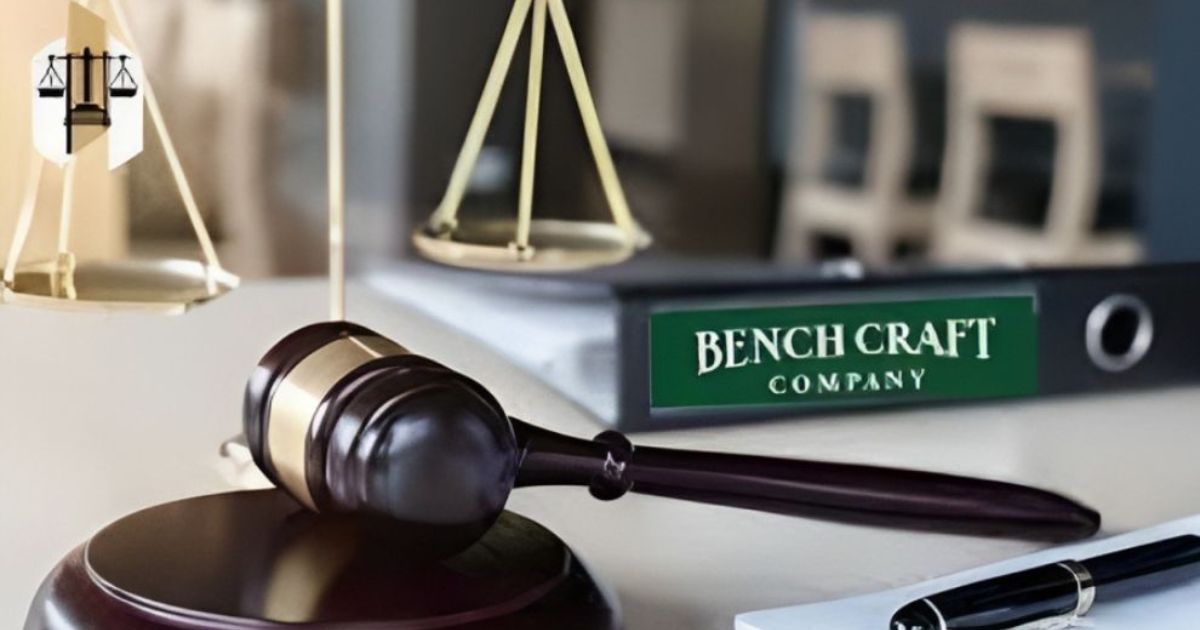Background of Bench Craft Company

Before getting too deep into the lawsuit, knowing Bench Craft Company’s history is essential. The business was founded to offer golfers’ associations marketing opportunities and has long been a significant force in the market.
Its strategies often involve placing advertisements on various golf course assets, such as scorecards, course guides, and tee signs, effectively targeting golf enthusiasts and local communities. Now, let’s move on to the allegations.
The Allegations
The Bench Craft Company lawsuit stems from allegations raised by several events involving customers and competitors. Among the number one accusations are claims of misleading marketing practices, contractual breaches, and unfair competition procedures.
Some customers have reported dissatisfaction with the consequences of Bench Craft Company’s marketing campaigns. They alleged the company’s deceptive representations of the potential reach and effect in their classified ads.
Moreover, competitors have voiced worries about the enterprise’s advertising and marketing techniques. These practices reportedly include misleading comparisons, fake claims about competition offerings, and competitive sales methods to undermine rival companies.
Legal Proceedings
As the allegations gained traction, legal motion ensued, leading to the initiation of the Bench Craft Company lawsuit. This lawsuit entails multiple plaintiffs, including dissatisfied clients and aggrieved competitors, searching for various alleviation. It ranges from financial repayment to injunctive measures to restrain the company from conducting alleged wrongful conduct.
Legal professionals expect a protracted legal battle, with both sides preparing to offer their arguments and proof in the courtroom. Its outcome could have far-reaching implications for the firm and the broader advertising enterprise. It also set precedents concerning acceptable enterprise practices and regulatory compliance requirements.
Read More Blog: What Does A Double Circle Necklace Mean?
Implications for the Industry
The company serves as a warning call for the advertising enterprise. It prompts stakeholders to reconsider their advertising and consumer relations techniques. It underscores the importance of transparency, honesty, and integrity in marketing practices. Bench Craft Company Lawsuit furthermore, it also highlights the dangers associated with deceptive representations and unfair competition techniques.
The lawsuit has sparked discussions about regulatory oversight and the need for more robust consumer safety measures. Industry businesses and regulatory bodies can also remember to implement stricter recommendations and enforcement mechanisms. This prevents misleading advertising practices and ensures a stage-playing subject for all marketplace members.
Repercussions for Bench Craft Company

While the final results of the lawsuit remain uncertain, Bench Craft Company is already experiencing significant repercussions from the criminal court cases. Bench Craft Company Lawsuit the business enterprise’s popularity has been tarnished, with harmful exposure surrounding the allegations affecting its relationships with clients and enterprise companions.
In response to the charges, the group has said they have done nothing wrong and are dedicated to upholding the most significant moral standards. The agency has vowed to cooperate entirely with the criminal technique and shield its popularity vigorously.
Importance of Ethical Advertising Practices
The Bench Craft Company lawsuit underscores the critical importance of moral advertising practices in retaining purchaser beliefs and fostering healthy opposition. In today’s era, customers are increasingly skeptical of advertising and marketing messages and speak for authenticity from manufacturers. Therefore, companies must prioritize transparency and honesty in their communications. Misleading advertising now damages patron trust and erodes the credibility of the whole advertising corporation.
Businesses that engage in misleading practices danger alienating their target audience and dealing with felony repercussions, as exemplified through the lawsuit. Therefore, it’s vital for advertisers to stick to ethical tips and regulatory necessities to keep their popularity and integrity.
Read More Blog: What Does A Double Circle Necklace Mean?
The Role of Regulatory Oversight

The lawsuit has also rekindled conversations about the government’s role in monitoring advertising and marketing practices and protecting consumers from deceptive marketing. While advertising and marketing rules vary by jurisdiction, most international locations have laws to govern advertising and marketing content. It saves users from fake or misleading representations and sells truthful competition.
However, efficiently implementing those rules remains an assignment, specifically in the digital advertising panorama, wherein systems and channels continuously evolve. Regulators must adapt to the changing dynamics of the advertising enterprise and leverage technology and records analytics to perceive and deal with misleading marketing practices proactively.
Embracing Transparency and Accountability

Advertisers may need to include transparency and duty as central ideas in the aftermath of the lawsuit. This means avoiding misleading or deceptive advertising techniques, providing consumers with accurate and error-free records about services and goods, and accepting responsibility for errors or shortfalls.
Transparency between businesses and customers promotes meaningful connections and builds trust. Companies can reveal their dedication to integrity by being transparent about their advertising practices. They can also earn the loyalty of discerning customers who value honesty and authenticity.
Investing in Consumer Education

In addition to promoting transparency and duty within the advertising and marketing industry, there may be a pressing need for more significant funding for client training. Many clients must gain the knowledge and cognizance to compare advertising claims and critically understand deceptive processes. Consequently, they will be vulnerable to abuse and profiteering by dishonest advertisers.
Giving customers knowledge about consumer rights, advertising practices, and how to identify false advertising can enable them to make wise decisions and protect themselves from harm. It should involve projects such as public cognizance campaigns, educational sources, and collaboration among government companies, advocacy businesses, and enterprise stakeholders.
Frequently Asked Questions
What is the Bench Craft Company lawsuit about?
The Bench Craft Company lawsuit involves allegations against the company for misleading advertising practices and other unethical business behaviors.
Which allegations were brought forth against Bench Craft Company?
Key allegations include misrepresentation of advertising reach, failure to deliver promised results, and contentious contract terms.
Has Bench Craft Company responded to these allegations?
Yes, Bench Craft Company maintains its innocence and presents evidence supporting their legitimacy.
Was there a settlement in the Bench Craft Company lawsuit?
Yes, the lawsuit resulted in a confidential settlement.
What are the potential impacts of the Bench Craft Company lawsuit?
The lawsuit could negatively affect the company’s reputation, financial stability, and relationships with partners.
Are there lessons to learn from the Bench Craft Company lawsuit?
Yes, the lawsuit underscores the importance of upholding integrity in advertising, promotion, and contractual dealings.
Conclusion
Ultimately, the Bench Craft Company lawsuit serves as a sobering reminder of the ethical and felony complexities inherent in the advertising enterprise. While advertising may be a powerful tool for agencies to reach and interact with clients, it should be wielded responsibly and ethically to avoid harming customers or undermining competition.











